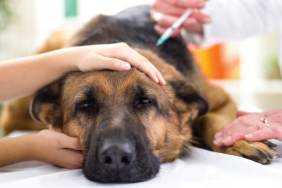Taking responsibility for your pet’s health would, naturally, entail yearly vet checkups and routine vaccinations, like rabies, distemper, bordatella and parvo virus. But have you ever stopped to wonder just exactly why you’re vaccinating your pet every year? Do you yourself get a chicken pox vaccination every year? How about a hepatitis shot?
We do not get vaccinations every year because we don’t have to and it’s possible our pets don’t either. Veterinary medicine is finally catching up to human medicine and the way vets think about vaccinations is changing for the better.
Shortly after your pet turns 16 weeks old, they typically have completed all their vaccinations, at which point, titer checks can be run for subsequent years to determine a pet’s immunity to certain viruses without blindly pumping them full of toxic vaccinations.
Titer checks are used to determine the existing levels of antibodies to disease in the blood. By drawing 1 ml of blood vets can test for actual immunity levels in your pet. If the levels come back too low, or negative, they might need another vaccination, however once a positive or strong immunity level occurs, the titer check will likely indicate that your pet will not need another vaccination.
“An animal with a positive test has sterilizing immunity and should be protected from infection. If that animal were vaccinated it would not respond with a significant increase in antibody titer, but may develop a hypersensitivity to vaccine components,” according to Dr. Ron Schultz, a renowned pet vaccination expert, who was recently quoted in Dogs Naturally.
Administering yearly vaccinations to a pet who is already immune can result in disastrous and expensive health issues, as it would in humans if we were vaccinated yearly. Vaccinations should not be given blindly or based on age. The determining factor for giving your pet a vaccine or booster shot according to Dr. Patrick Mahaney, an experienced vet, should be their immune system, “if your pet is sufficiently immune, giving them a vaccine doesn’t make them more immune.”
Cost
The cost of a titer check varies between vets, cities and states. In Charlotte, NC titer checks range from $70-$90 and near the D.C. area they run about $110. The cost of vaccinations can often be less than the titer check, which is why some vets do not offer it to many clients.
The cost of a titer might be slightly higher, but the price your pet’s health will pay for yearly vaccinations could be high.
Rabies
A titer check can be used to check for the rabies vaccine, however, rabies is required by law and states do not accept a positive titer check in place of a current rabies certificate.
Consult with your vet about replacing your pup’s yearly vaccination schedule with an annual titer check instead. Reach out to several vets in your area to discuss the benefits of titer checks, prices and what is best for the overall health of your pet.





